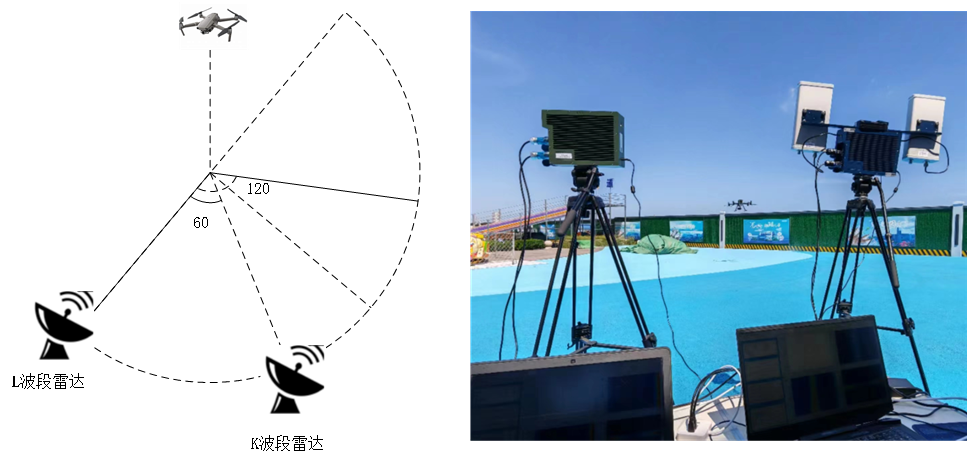LLS-LFMCWR 2025 No.1
Chief Editors of the Data: Xiaolong Chen Jian Guan
Unmanned aerial vehicles (UAVs) and other "low, slow, and small" (LSS) targets are characterized by low flight altitude, slow movement, and small physical dimensions. These features result in low observability, posing significant challenges to traditional radar detection technologies, especially in complex environments where real-time detection and classification are required. To support research needs, the release of the LSS detection dataset aims to provide high-quality and diverse data for the development of radar target detection and recognition algorithms. This initiative is intended to advance relevant technologies and engineering applications, ultimately enhancing radar systems' capabilities in detecting and identifying LSS targets.
LSS-FMCWR-2.0: Multi-Band and Multi-Angle FMCW Radar Dataset for Low-Slow-Small Target Detection
Chief Editors of the Data: Xiaolong Chen Jian Guan Wang Yuan
The LSS-FMCWR-2.0 dataset contains radar echo data for six types of low-slow-small (LSS) aerial targets: DJI M350, DJI Inspire 2, DJI Mavic 2, a six-rotor UAV , a simulated bird, and the AC311 helicopter. These targets exhibit diverse characteristics in terms of size, structure, and motion, offering a comprehensive representation of the variability found among LSS targets. Data collection was conducted using two frequency-modulated continuous wave (FMCW) radars operating at different frequency bands—K-band and L-band. The K-band radar captured data from multiple angles, and the angular separation between the two radars was set to 0°, 60°, 90°, 120°, and 180°, enabling the capture of rich, multi-dimensional features of the targets. The dataset includes 20 samples each for the DJI M350, six-rotor UAV, DJI Inspire 2, and DJI Mavic 2; 2 samples for the AC311 helicopter; and 4 samples for the simulated bird. With its diversity in target types, complex scenarios, and support for multiple tasks, this dataset serves as a valuable resource for advancing research in radar-based target detection, classification, and recognition of LSS targets.
For details on dataset usage, please refer to the following publications:
“Multi-Band and Multi-Angle FMCW Radar Dataset for Low-Slow-Small Target Detection (LSS-FMCWR-2.0) and a Feature Fusion Classification Method” and
“LSS-FMCWR-2.0: User Guide for the Multi-Band and Multi-Angle FMCW Radar Dataset for Low-Slow-Small Target Detection.”

Data release time:2024-05-12
Download
Register
Data Usage Protocol of Journal of Radars
The data can be used free of charge for scientific research, teaching and so on, but the data source should be marked in the reference according to the citation format.
Data use for commercial purposes requires permission from the Editorial Department of Journal of Radars.


 Submit Manuscript
Submit Manuscript Peer Review
Peer Review Editor Work
Editor Work
 微信 | 公众平台
微信 | 公众平台 

